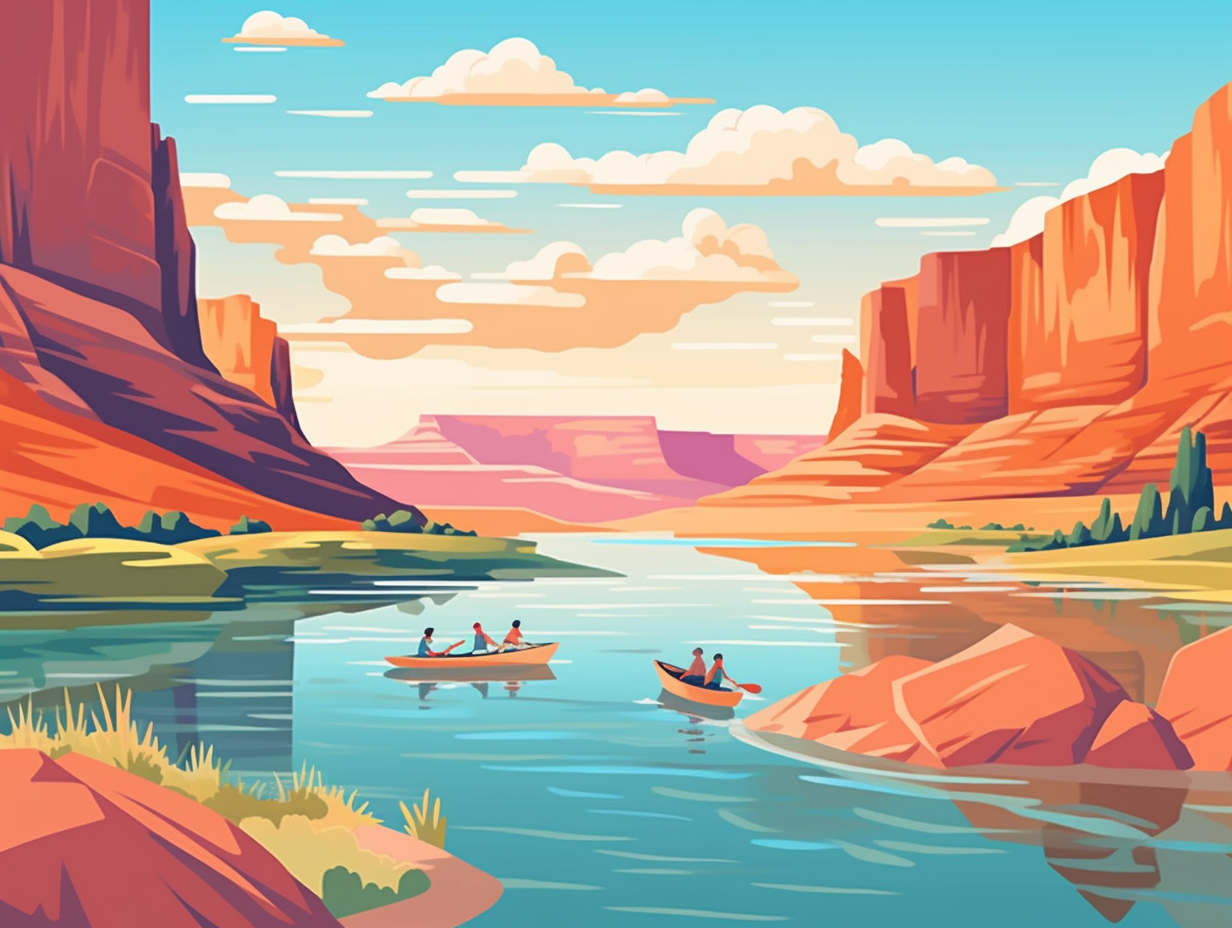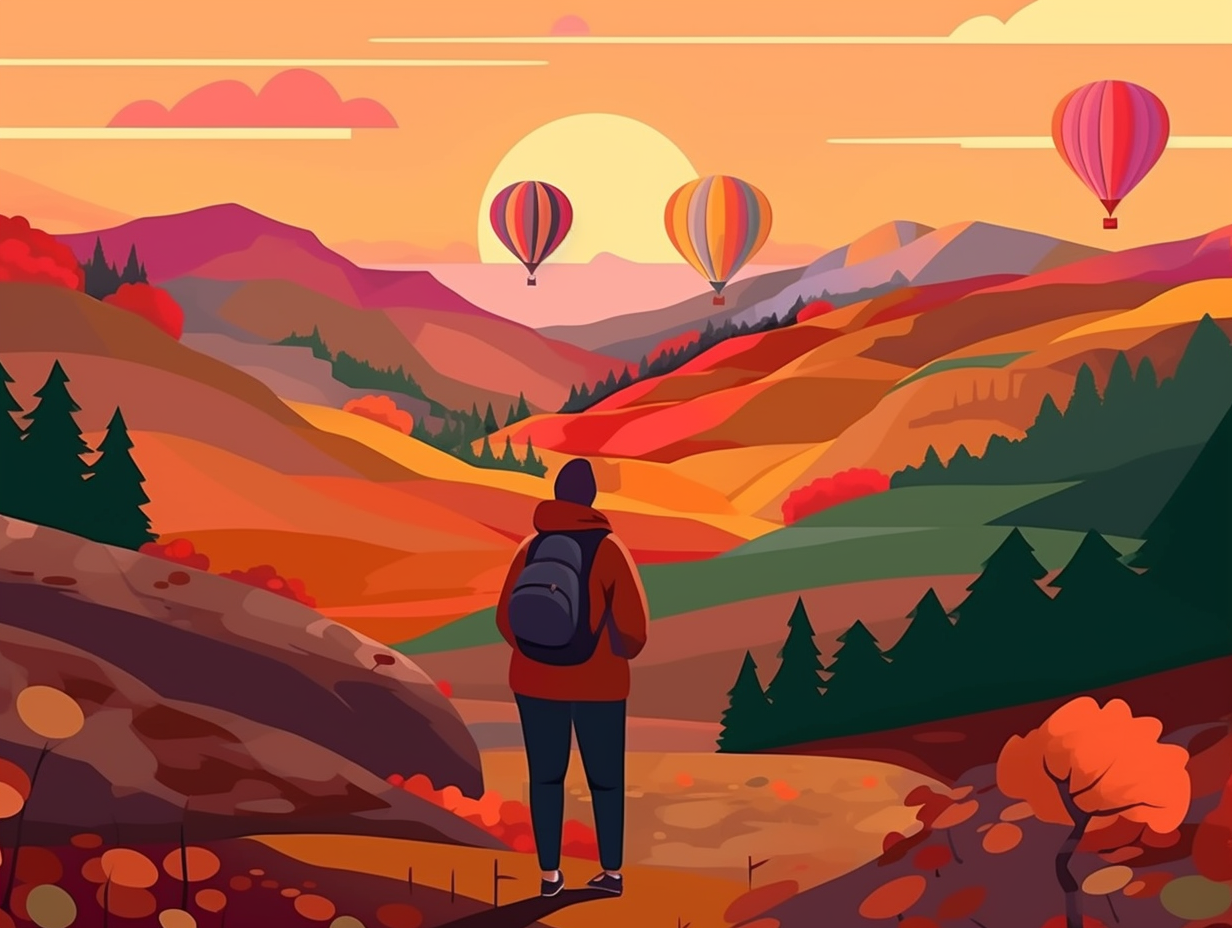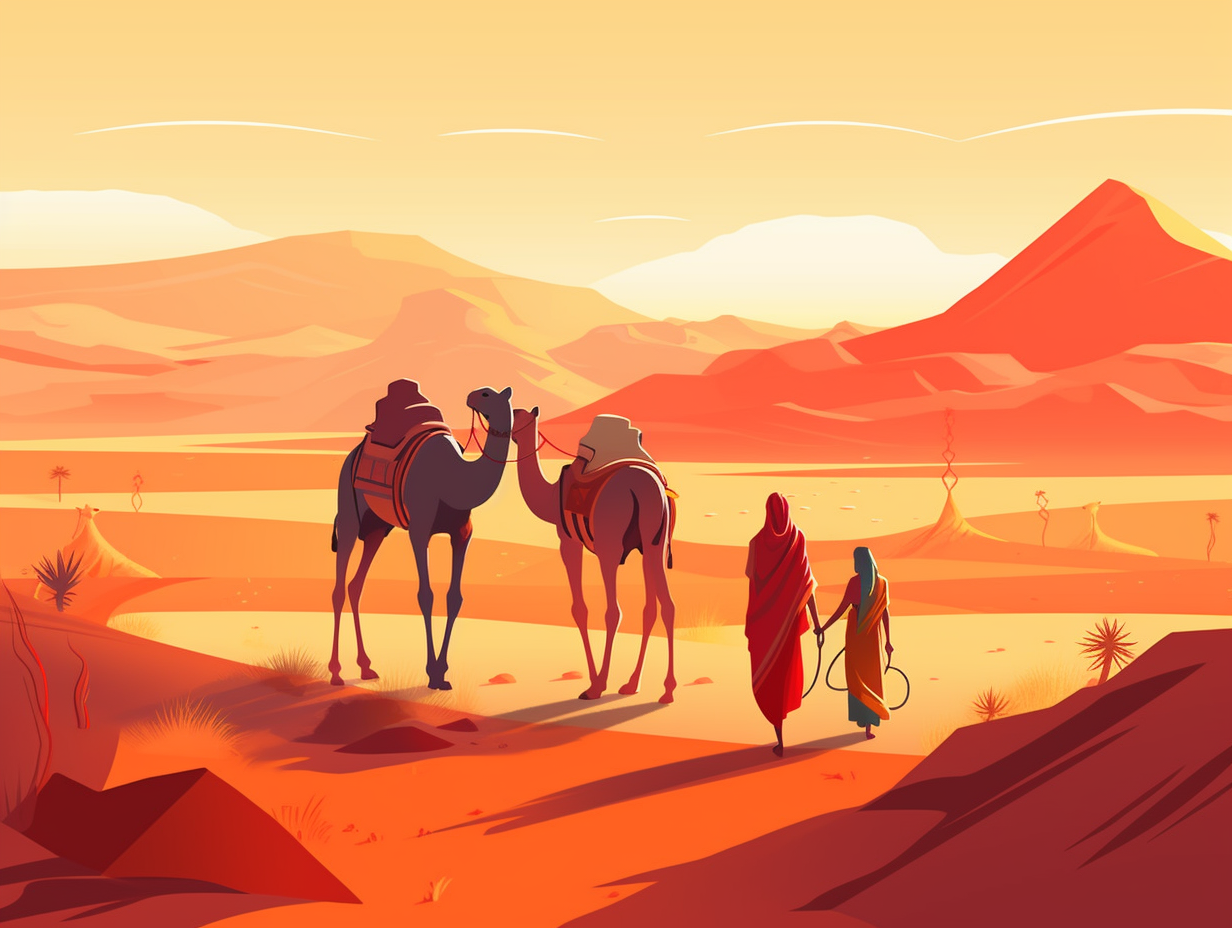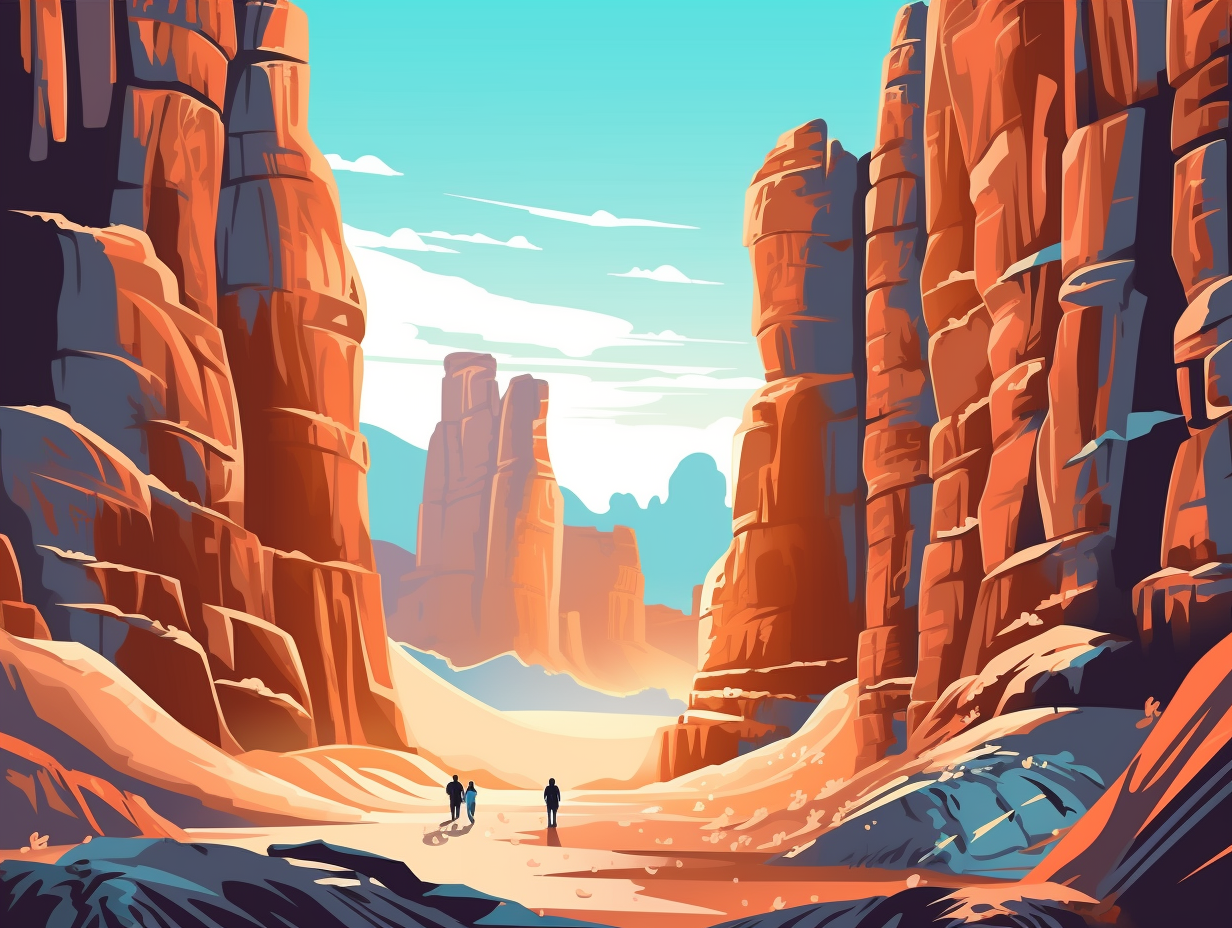Discover the Secrets of the Nile: Top 27 Fun and Fascinating Facts About the World's Longest River

1. 30 Million-Year-Old Water Slide
The Nile River must have taken an eternity for Mother Nature to squiggle onto Earth's canvas, or maybe she just wanted a water slide to rival Disney's: The grand reveal is that a recent study has cracked the case of the ever-elusive Nile timeline, finding geological evidence pointing to a whopping 30 million-year-old existence for the fabled river, all thanks to the sloth-like crawling of the Earth's mantle!
Source => sci.news
2. High-speed Highway with Tourist Charm
The Nile River: less a lazy river ride, more a high-speed water highway with a touch of touristy charm. As it meanders through Egypt supporting local agriculture, quenching parched throats, and giving the phrase 'going with the flow' a whole new meaning, this watery wonder not only carries ships and boats to far-flung destinations, but also has to deal with human-induced hurdles like ecosystem changes from dam construction, erosion, and pollution, from both humans and agriculture, making the Nile a testament to humanity's ability to adapt and the ongoing battle to maintain the river's significance in popular culture, the economy, and the environment.
Source => nationalgeographic.org

Did you know the Ganges River is home to over 90 species of amphibians, including rare gems like the South Asian river dolphin and the critically endangered gharial? Dive in to discover more!
=> Fun Facts about The-Ganges-River
3. H2Olympic Powerlifting Champion
Who would've thought the Nile River was Egypt's H2Olympic champion and a heavyweight in the "Powerlifting" category? Quite the multi-talented swimmer, isn't it?: The Nile not only serves as the vital water source for Egypt and Sudan but also flexes its muscle in generating over 7% of Egypt's total energy through hydroelectric power. However, the construction of the Grand Ethiopian Renaissance Dam might just throw a wrench in this winning streak, igniting a tug-of-war between Egypt, Ethiopia, and Sudan over water and energy resources.
Source => arab-reform.net
4. King of River One-Liners
If the Nile River were a stand-up comedian, it'd be the king of the one-liners, leaving a trail of laughter through Africa faster than you could say "crocodile tears": Measuring over 4,000 miles long and running through 11 different countries, the Nile dominates the competition – and riverdance – as the world's longest river, where it sustains countless communities, waters agricultural lands, and gives renowned performances of "Swan Lake" starring its very own Nile crocodile and African elephant ensemble.
Source => nationalgeographic.org
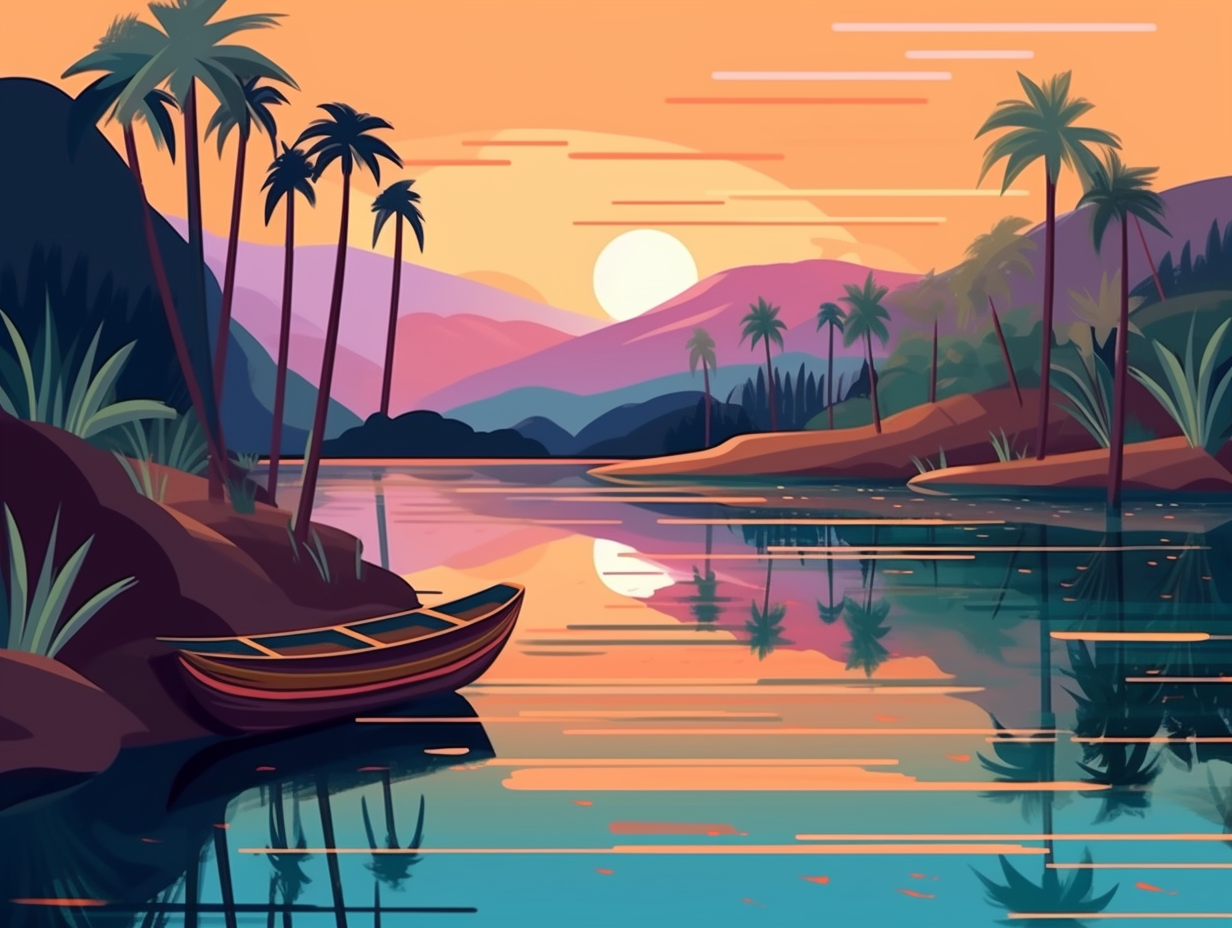
5. Hapy, the OG God of Abundance
Before there was Aquaman, there was Hapy, the OG God of Abundance sporting the latest in blue and green skin fashion and flaunting his plus-sized figure like nobody's business: This ancient Egyptian deity symbolized the vital annual flooding of the Nile River, an event so significant that it marked the beginning of their calendar, proving that water brought more than just beer and skinny dipping to the world's oldest civilization.
Source => history.com
6. Insomniac's Bedtime Papyrus Tales
Curiosity abounds in the Land of Nod, where insomniacs roam, grasping at straws of slumber like parched throats dream of oases; little did they know their bedtime tales begin in ancient Egypt: The ideal locale for the growth of papyrus plants, the Nile River delta gifted us with paper, cloth, boxes, and rope - the cradle of our cradle of civilization's written word, spreading knowledge through the sands of time.
Source => nationalgeographic.org
7. White and Blue Nile Epic Partnership
When the White Nile and Blue Nile aren't busy auditioning for roles in a watercolor painting, they're joining forces in a truly epic partnership: Merging in Khartoum, Sudan, these two rivers stretch a whopping 6,695 kilometers to create the world's longest river, the Nile, with the White Nile's signature clay sediment providing a light hue, while the Blue Nile contributes its dark silt.
Source => en.wikipedia.org
8. Case of the "Flows"
They say the Nile River has got a serious case of the "flows": This wondrous waterway, spanning a staggering 11 countries and holding the title of the world's longest river, not only makes the surrounding region absurdly fertile thanks to its annual flooding spa treatments, but also stands as the lifeblood for countless communities, fueling both economic and social growth.
Source => mdpi.com
9. Fruitful Horticultural Hotshots
They say an apple a day keeps the doctor away, but it seems the ancient Egyptians were fruitful in more ways than one: These horticultural hotshots cultivated a delightful assortment of fruits such as grapes, watermelons, and figs, and later introduced peaches and pears, all while mastering intricate irrigation and propagation systems to keep their orchards flourishing.
Source => fao.org
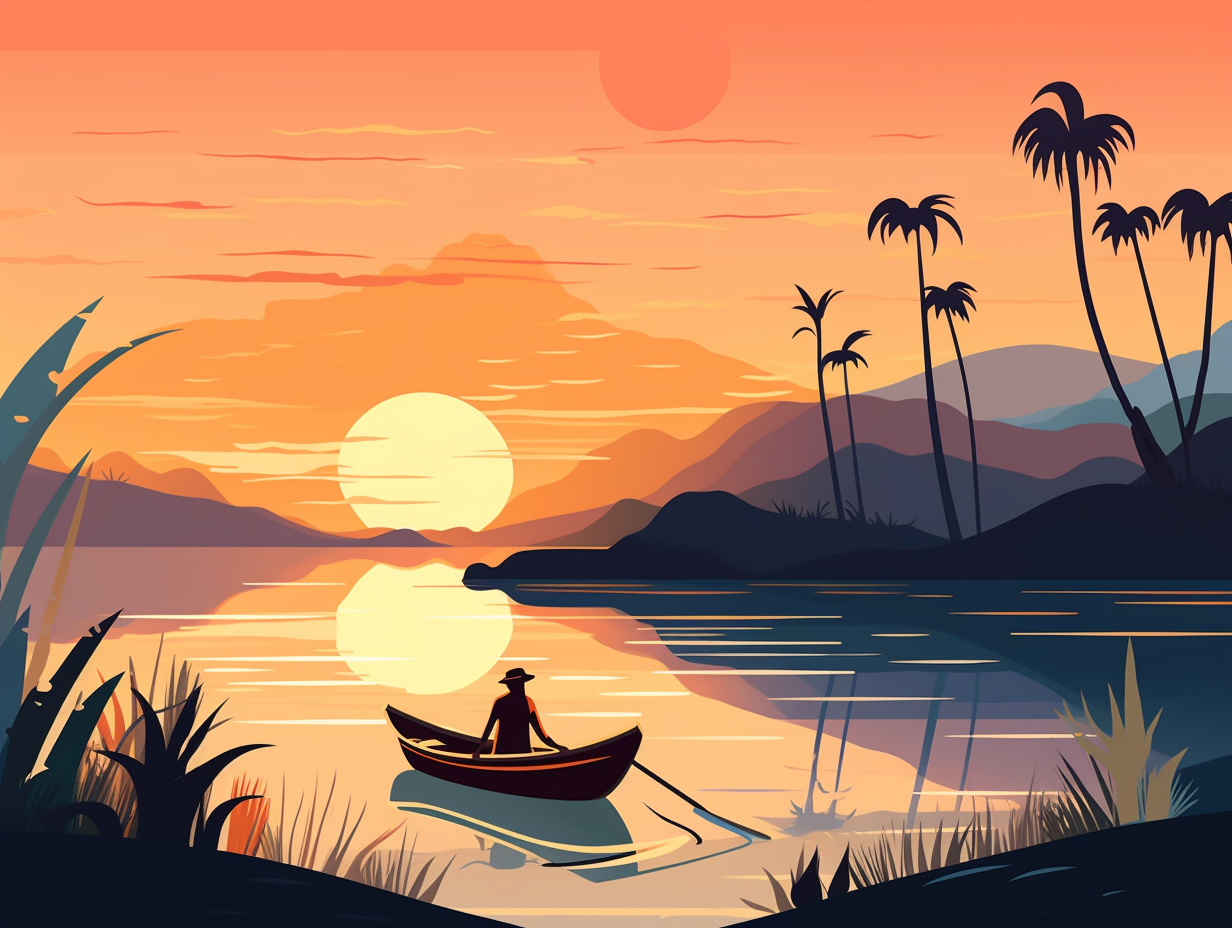
10. South-to-North Rebel River
Calm down, compasses, your north-seeking arrow won't be needed here: The Nile River defies the norms by flowing from south to north, making it a downright unconventional six-thousand-six-hundred-kilometer rebel amongst its river peers.
Source => nationalgeographic.org
11. Cradle of Architectural Marvels
Where ancient Egyptians pharaoh'd beyond measure: The Nile River valley was the very cradle of their civilization, giving rise to awe-inspiring architectural and engineering marvels such as the Giza pyramids and the mystical necropolis of Saqqara.
Source => traveltips.usatoday.com
12. Celestial Uber for Deities
Before GPS, even ancient Egyptian deities relied on boats for a celestial Uber across the Nile: The Nile River served as a ceremonial highway, transporting divine images and mummified elites between temples, while the sun god cruised the sky in his solar bark. To this day, Egyptians navigate the Nile in felluccas, boats with large sails that make them the sports cars of the water.
Source => historymuseum.ca
13. Ancient Egyptian Tina Turners
Rolling on the river like the ancient Egyptian Tina Turners, sailing their way into the next life with a rhythmic beat: The Nile River was the prime conduit for transportation and trade in ancient Egypt, with skilled boat builders creating vessels as far back as 3500-3300 B.C.E., making it possible to move even massive objects like stones and obelisks with relative ease.
Source => carnegiemnh.org
14. Dredging Cheat Code
If the Nile River were a video game, dredging would be the ultimate cheat code: dramatically altering water levels and river flow dynamics, especially in the second reach from Esna to Naga Hamady barrage. Who knew that cheat codes work in real-life too, creating sneaky pools and morphological changes at navigation bottleneck locations, all while keeping the river disturbance-free and maintaining navigational efficiency? Game on, Nile!
Source => sciencedirect.com
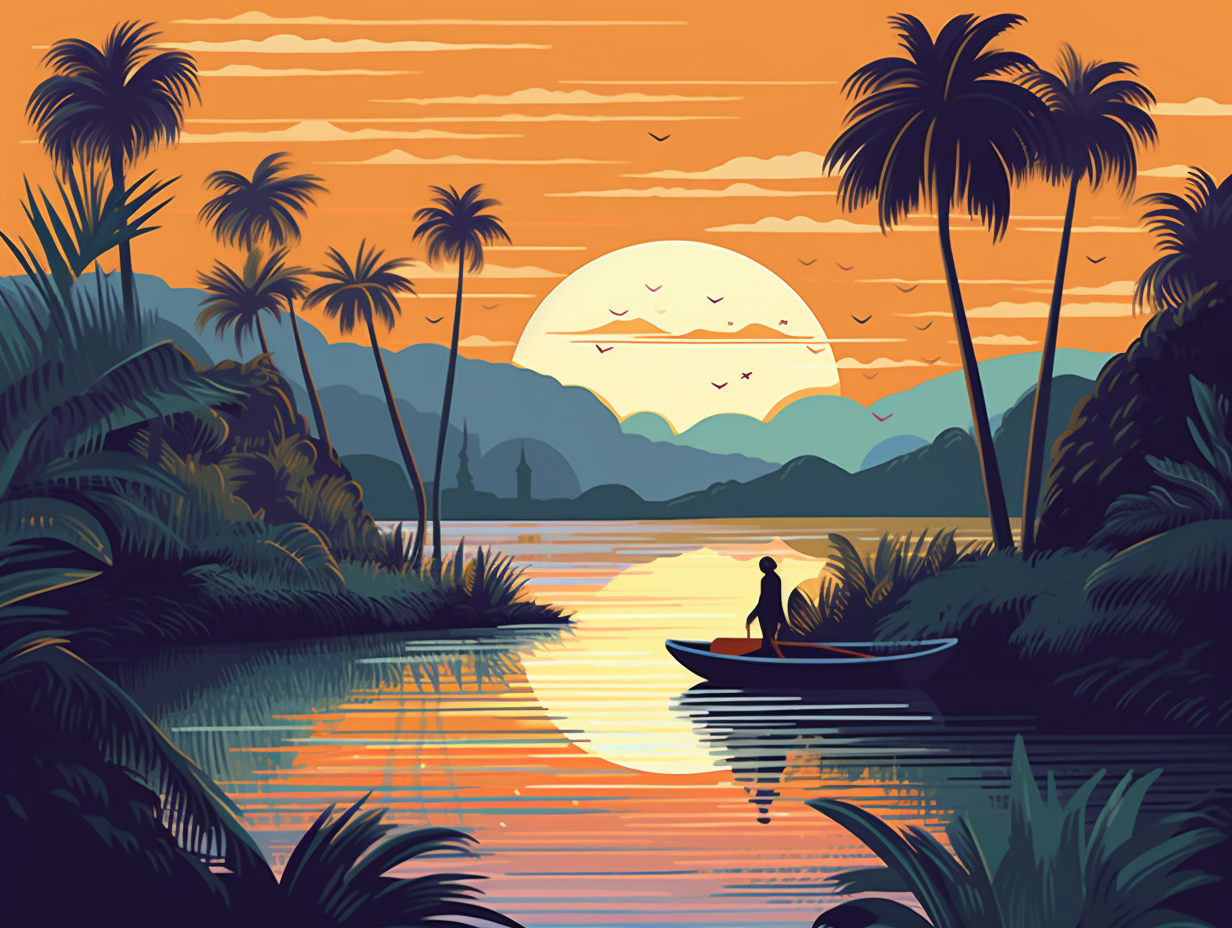
15. Scaly Party Crasher
Don't invite this scaly party crasher to your next shindig: The Nile crocodile, Africa's largest freshwater predator, grows to lengths of 6.1 meters and weights of 1,000 kg. It's known as one of the most dangerous species of crocodile globally, stealthily ambushing prey and causing hundreds of human fatalities annually. Master of hide-and-seek, it lurks in lakes, rivers, swamps, and marshlands, making it second in size only to the saltwater crocodile. Beware of these grumpy, old reptiles, for not only are seniority and size respected amongst Nile crocodile society, but these big guys also love to share their deadly dinner parties and sunbathing spots!
Source => en.wikipedia.org
16. Hapi's Water Level Measuring Cult
Rumor has it that Hapi, the ancient Egyptian god of excessive man-boobs and food babies, had a cult following obsessed with measuring water levels: In all seriousness, Hapi was the god of the annual flooding of the Nile and his priests at the First Cataract, Elephantine, conducted rituals and monitored the nilometer to predict floods, which symbolized the fertility of the great river.
Source => en.wikipedia.org
17. Lengthy Text Messages on Papyrus Scrolls
Forget love letters - imagine writing lengthy text messages on 100-foot scrolls: The ancient Egyptians had it all figured out when they made use of papyrus plants found near the Nile River to create paper sheets united only by the plant's natural stickiness, which were eventually amassed into comically long antiquated scrolls that played a crucial role in conserving their literature and historical records.
Source => apps.lib.umich.edu
18. Grumpy Deity Birthday Calendar
Talk about a calendar malfunction: the ancient Egyptians had one that made even their deities grumpy! The Egyptian calendar was structured around three seasons that corresponded with the Nile river's flooding cycle and agricultural growth. It contained 12 months, each with three ten-day weeks, totaling 365 days in a year. However, the last five days were considered unlucky and dangerous as they commemorated the birthdays of deities like Osiris, Isis, Horus, Seth, and Nephthys. The lack of leap years made it less accurate, but they also had a more precise religious calendar based on agricultural and astronomical cycles.
Source => historymuseum.ca
19. High Stakes Game of Water Works
Talk about a "high stakes game of Water Works": the Nile River's annual flooding between May and August all boils down to a massive rainfall deluge over the Ethiopian Highlands! This wet and wild natural event contributes up to 90% of the Nile's water, mostly flowing through the Blue Nile and Atbara River, with the rest shared by the Sobat and White Nile - creating a legendary irrigation system that's kept Egypt's agriculture game on point for over 7,000 years.
Source => en.wikipedia.org
20. Waterslide for Crops
Waterslide for crops: The ancient Egyptians created a shaduf - a hand-operated device that cleverly lifted the Nile's water like a mini irrigation rollercoaster to keep their fields happy and hydrated. Beyond this nifty gadget, they also harnessed the river's natural flood cycle through canals, irrigation ditches, and regulated sluices, turning the Nile's yearly waterworks into a fruitful spectacle for their farmland.
Source => ancientengrtech.wisc.edu
21. Aswan Dam's Lake Nasser
Call in the damsels and fill that Nile a mile, because the Aswan Dam has made Lake Nasser quite the finny frenzy: Constructed in the 20th century, the dam created Lake Nasser, now home to over 90 species of fish and a popular fishing destination, but also negatively impacted the environment, displaced tribes and Nubians, and led to an overreliance on artificial fertilisers that damage the river.
Source => heritagedaily.com
22. Amazing Race Through Africa
If the Nile River were a contestant on "The Amazing Race", it could conquer the competition without breaking a sweat, hopping through 10 African countries without gasping for air: This astonishing river originates from Lake Victoria, stretching over 6,600 kilometers till it reaches the Mediterranean Sea, quenching the thirst of millions while inspiring countless myths and legends throughout history.
Source => nationalgeographic.org
23. Nile River Calendar System
Talk about going with the flow: the ancient Egyptians were so in sync with their watery companion, the Nile River, that their entire calendar system revolved around its moody cycles! As the lifeblood of their civilization, the Nile's inundation (Akhet), growing season (Peret), and harvest (Shemu) were the celestial clockwork that determined their schedules for farming, praying, and trading.
Source => carnegiemnh.org
24. Pollution Slams Gavel on Underwater Drama
Who needs Atlantis when you have the Nile Dynasty? The mighty river's posse of fishes and creatures were on their way to box office fame and fortune until pollution slammed its gavel on their underwater courtroom drama: Despite being the lifeblood of Egypt by providing 97% of its water, the Nile River is grappling with pollution caused by industrial waste, agricultural runoff, and wastewater, endangering its diverse ecosystem and human health. Thankfully, around 300 eco-warriors have swooped in to rescue the Nile from its trash-tastrophe, amassing a whopping 37 tonnes of garbage within just three years.
Source => phys.org
25. Rocking the House with River Materials
Ancient Egyptians literally rocked the house when it came to construction materials: they sourced high-quality sandstone, limestone, and Aswan granite from the Nile River's lower valley, turning mountains into quarries for some heavy-duty home improvement.
Source => ucl.ac.uk
26. Plenty of Fish in the Nile
Whoever said "there's plenty of fish in the sea" clearly didn't account for the Nile River and its seemingly infinite aquatic wonders: The revered river stretches across 11 African countries, with Egypt's very existence historically hinging on its waters. However, this aquatic artery of life now faces threats from climate change and territorial water disputes, with the Grand Ethiopian Renaissance Dam serving as a potential floodgate to conflict between Egypt, Sudan, and Ethiopia. Talk about a dam problem!
Source => abcnews.go.com
27. Solar Powered Egyptian Farmers
Ancient Egyptians may have worshiped the sun god Ra, but modern-day farmers are bowing down to the power of solar energy instead: The Nile River, a water supply source for 10 countries, is facing the effects of climate change, pushing Egyptian farmers to use solar panels financed by the UN for irrigating their crops in the delta, ultimately reducing fuel consumption and CO2 emissions, and aiding Egypt's 2030 Vision goal of increasing its electricity generated from renewable sources to 42% by 2035.
Source => africanews.com
Related Fun Facts


